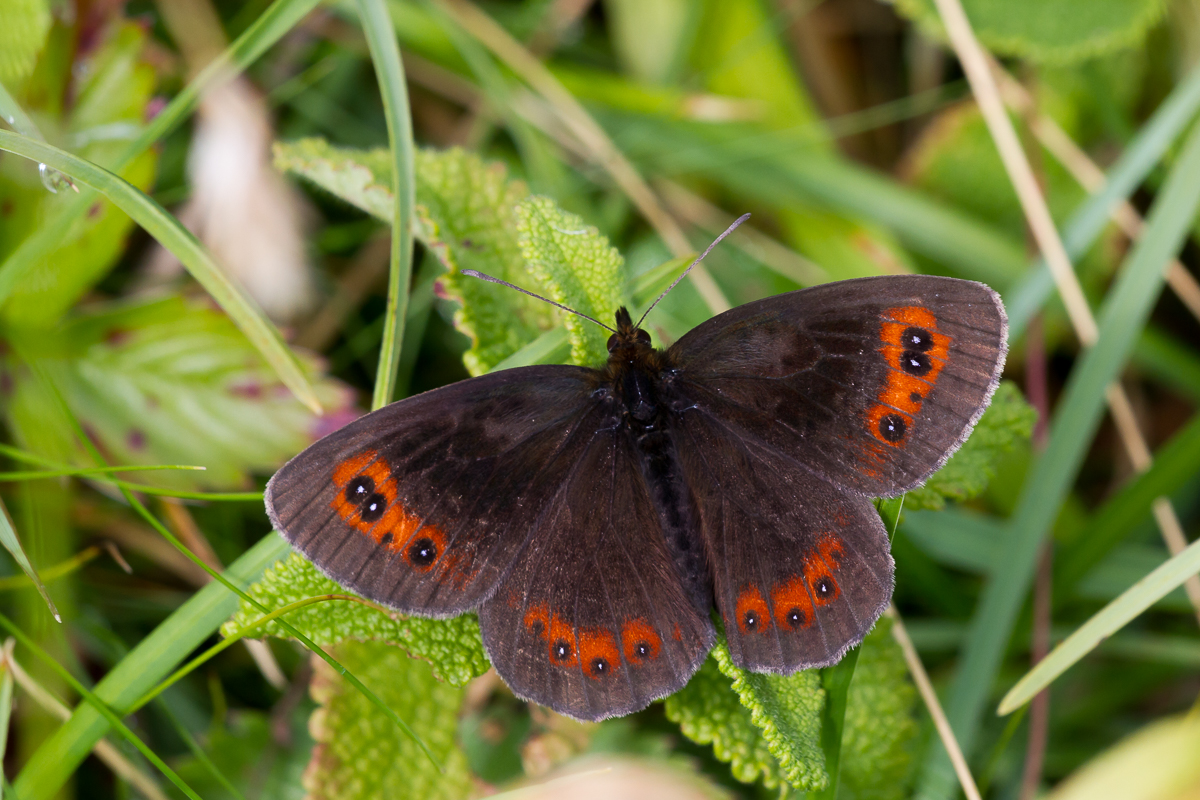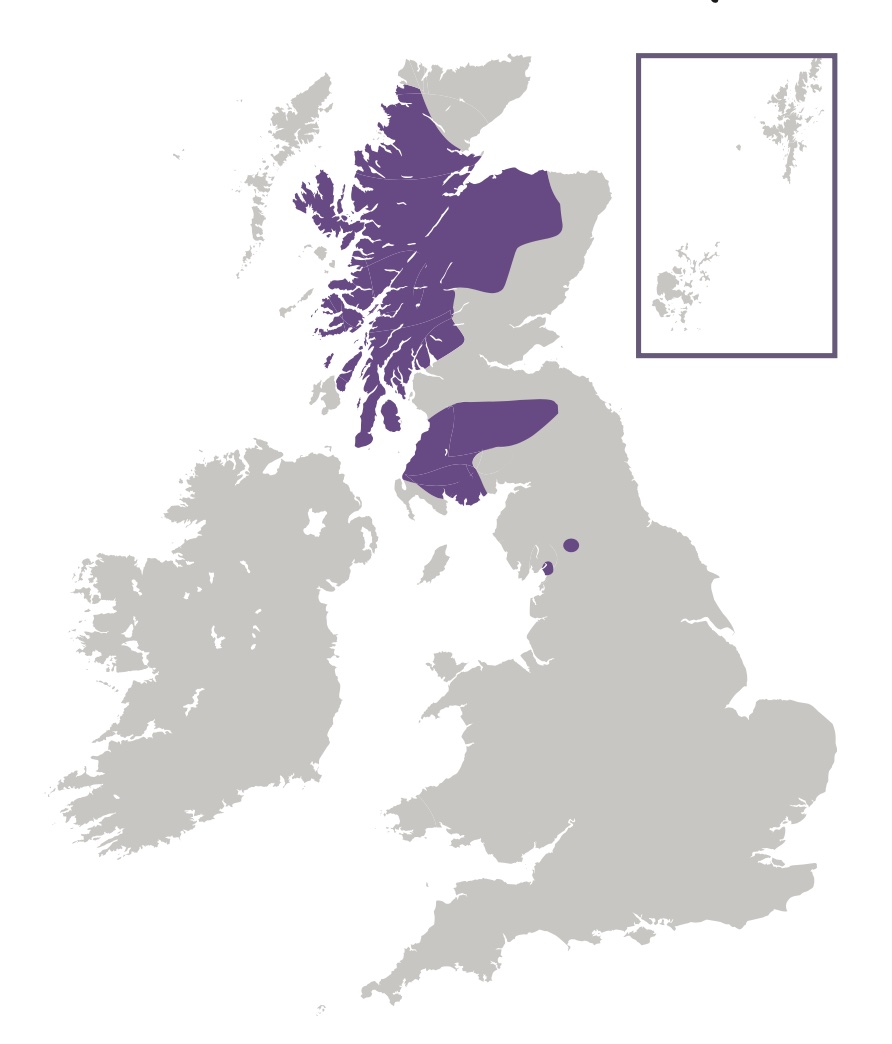
Photo © Peter Eeles
Despite its name, the Scotch Argus is not only found in Scotland; it is also found at two sites in the north of England. A freshly-emerged Scotch Argus is a sight to behold, the dark brown velvety uppersides making the butterfly appear almost jet black from a distance. The butterfly is unmistakable when seen basking with its wings open, when orange bands containing distinctive spots are revealed. This butterfly lives in well-defined colonies that are often very large.
Like the Mountain Ringlet, the ability of this butterfly to survive cool temperatures means that it was probably one of the first species to recolonise the British Isles after the last ice age, over 10,000 years ago. The English colonies, Arnside Knott and Smardale Gill, are both found in Westmorland. Colonies are much more numerous in Scotland, where this butterfly can be found in most of northern, western and south-west Scotland. This butterfly is absent from the lowlands of central Scotland, many of the western isles (including the Outer Hebrides), Orkney and Shetland.
A colony at Grassington in Mid-west Yorkshire, famous for a particular race that had reduced orange markings, became extinct in 1923. According to Dennis (1977) "This colony which used to occupy parts of Grass Wood was last observed by Clutten in 1923. The orange markings on the upperside of the males were nearly obsolete; and this feature in the females was scarcely better developed than in ordinary males".
The adults are often the first butterflies of the day to be seen at suitable sites, their dark brown wings presumably allowing them to warm up more quickly than other species. They fly only when the sun is shining, and tend to retreat among grasses as soon as clouds appear, their undersides closely resembling a dead leaf. They reappear as rapidly when the sun comes out again and it is fascinating to watch an apparently-barren grassland come to life with butterflies as the clouds move away. Both sexes feed from a variety of nectar sources.
Males adopt both perching and patrolling strategies when in search of a mate. Males will fly for long periods when patrolling, searching out any dark brown object that is a potential mate. Females are mated shortly after they emerge with no discernable courtship involved, and the pair remain coupled for a few hours.
When egg-laying, the female selects sites that are in full sunshine and that are sheltered. She will bask for a while before crawling down into the grass and laying a single egg either on the grass or on nearby vegetation or debris. Eggs tend to be laid on Purple Moor-grass in Scotland and Blue Moor-grass in the Lake District.

Most colonies are found in sheltered and damp areas. Bogs, woodland edges and riverbanks where the foodplant grows are typical habitats. The English colonies are situated in a different type of habitat, where sites are limestone grassland sheltered by adjoining woodland.
Adults feed primarily on brambles (Rubus spp.), Devil's-bit Scabious (Succisa pratensis), Field Scabious (Knautia arvensis), hawkweeds (Hieracium spp.), Heather (Calluna vulgaris), knapweeds (Centaurea spp.), ragworts (Jacobaea spp.), thistles (Carduus spp. and Cirsium spp.) and Wild Marjoram (Origanum vulgare).
The primary larval foodplants are Blue Moor-grass (Sesleria caerulea), Purple Moor-grass (Molinia caerulea) and Sheep's-fescue (Festuca ovina). Cock's-foot (Dactylis glomerata), Common Bent (Agrostis capillaris), Common Couch (Elymus repens), Glaucous Sedge (Carex flacca), Sweet Vernal-grass (Anthoxanthum odoratum), Tufted Hair-grass (Deschampsia cespitosa) and Wavy Hair-grass (Deschampsia flexuosa) are also used.
